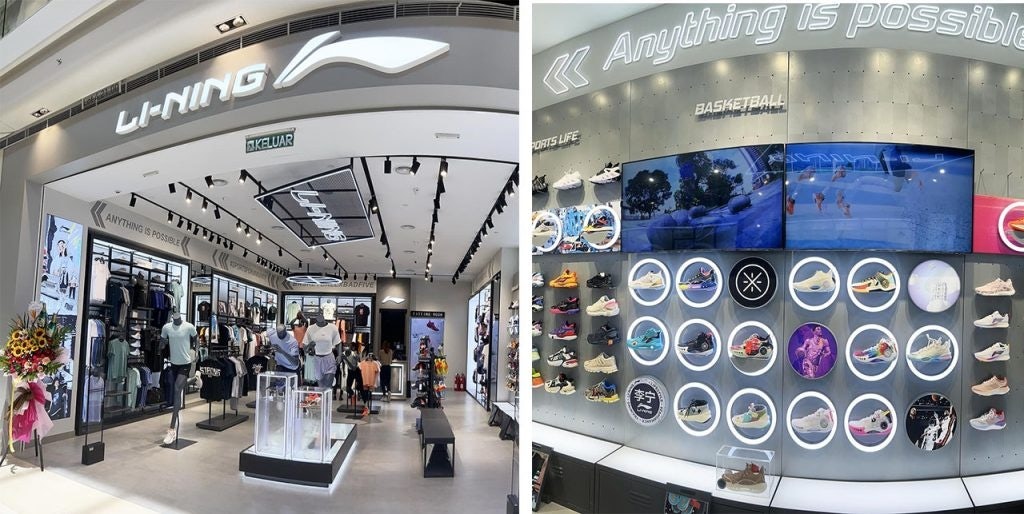Now that China’s borders have reopened, mainland Chinese tourists are ready to step back out into the world (albeit with caution) and spend their hard-earned Renminbi. But experts say that they’re not returning to their old stomping grounds — at least, not yet.
Deterred by visa issues and strict entry requirements, many Chinese residents have shied away from Europe, Australia, and Canada — the top areas of interests of Chinese travelers in 2021, according to Morning Consult — in favor of their neighbors down south.
When it was first announced that China would be lifting its travel restrictions in January, several Southeast Asian nations welcomed visitors with open arms or, in Thailand’s case, a literal red carpet. In the run-up to the 2023 Lunar New Year holiday, air ticket bookings from mainland China to Southeast Asia surged 864 percent compared to last year’s holiday period, according to Chinese travel company Trip.com.

Clearly, Southeast Asia is a promising market, not just for patronizing local consumers but serving mainland Chinese visitors as well. As such, Chinese companies have started eyeing the region as one of their first stops for global expansion. What factors are luring businesses to the area, and what challenges await them?
Digitally-savvy Southeast Asian customers and e-commerce offer a “long runway of growth”#
Tourism is just one part of Southeast Asia’s appeal to businesses. ASEAN (The Association of Southeast Asian Nations, comprising 10 members) was among the fastest growing regions in the world in 2022 and is expected to outpace global growth in 2023, even amid worsening macroeconomic conditions. In fact, ASEAN countries have a combined GDP that ranks fifth globally after the US, China, Japan and Germany.
According to the World Economic Forum, ASEAN is set to gain 140 million new consumers by 2030, many of whom will make their first online purchase and buy their first affordable luxury product. A study by McKinsey & Company adds that the region has an average e-commerce penetration rate (excluding food and beverage) of 20 percent, which is projected to triple in size and reach $230 billion in gross merchandise value by 2026; by contrast, China’s e-commerce penetration rate is 47 percent. In other words, “there is a long runway of growth,” the consulting firm writes.
“As customers get more accustomed to shopping online, they’ll likely extend their digital purchases beyond apparel and low-value consumer electronics,” states the McKinsey report. “Food and beverage, beauty products, and home and living goods are expected to enjoy the strongest growth, although category penetration is expected to deepen across the board.”
Tencent, Lazada and other Chinese companies set up shop in Southeast Asia#
Given these opportunities, plus the region’s physical proximity to China, several Chinese tech companies have turned to Southeast Asia for expansion. Tencent, for example, has signed partnerships with Southeast Asia’s ride-hailing and food-delivery superapp Grab to allow Chinese users to use services across 480 cities within Weixin (mainland’s version of WeChat).
TikTok-owner ByteDance, Alibaba’s e-commerce platform Lazada, and e-commerce enabler Baozun have set up regional headquarters in Singapore. Meanwhile, telecoms leader Huawei has opened three data centers in Southeast Asia and plans to invest $300 million to develop cloud infrastructure in Indonesia, allowing it to capitalize on the budding digital economy and better localize with the data gathered.

“Southeast Asians have a good understanding that Chinese brands can now be competitive at the international level,” says Nicole Briones, operations director of brand communications consultancy Vero in the Philippines. “Filipinos are now discovering that they are in the forefront of technology, innovation and creativity in Asia and even in the world — specifically in the smartphone, automobile and social media platform industries.”
On the consumer goods side, C-beauty brand Perfect Diary chose Southeast Asia as its first foreign market in 2020, using local e-commerce platforms like Shopee and Lazada to leverage traffic and increase sales quickly. Just a year after its global launch, Perfect Diary was ranked first in color cosmetics in Singapore and Vietnam, among other categories. Similarly, Li-Ning, a sportswear company known for its Guochao designs, selected Singapore for the location of its first flagship outside of China back in 2009.

“When it comes to mono-brands like Perfect Diary and Li-Ning, their Chinese pride designs can also be interpreted as designed for/by Asians, which makes the brands compatible and competitive in Southeast Asia,” explains Vu-Quan Nguyen-Masse, VP of Culture & Brand, ASEAN at Vero. “With relevant communication and marketing efforts, they can probably go head-to-head with Western brands, due to more cultural proximity.”
Local stars like Shopee bring fierce competition#
However, finding success in Southeast Asia isn’t so simple, particularly for businesses that have direct competition. This is the issue JD.com is facing. The e-commerce titan stopped taking orders in Thailand and Indonesia on February 15 and will officially shut down both channels by the end of March.
When it comes to e-commerce, Chinese e-tailers have to go up against Shopee, considered the largest e-commerce platform in Southeast Asia. Despite only launching in 2015, the platform attracted 343 million monthly visitors by 2021 with irresistibly low prices and star-studded marketing campaigns. There’s also Lazada, in which Alibaba injected $1.6 billion in 2022, that operates in six countries and aims to serve 300 million customers by 2030.

“Apart from having to compete with well-established local and international brands that have already prevailed in the SEA markets, Chinese and foreign brands that are planning to enter the markets also have to compete with each other as cross-border e-commerce is significantly rising,” notes Prapasri Vasuhirun, VP of Consumer Communications at Vero in Thailand. “Local consumers are now being overwhelmed with brands and products that can sometimes be perceived as identical.”
Additionally, new entrants will need to build their own infrastructure to handle deliveries, says Ming Yii Lai, a project leader at Daxue Consulting. For example, JD’s Indonesia arm has 13 warehouses, its own logistics fleet and a network of partners to fulfill orders to the vast geographical area. However, “the huge initial investment may hinder [JD’s] ability to provide huge discounts to the relatively price-sensitive users in Southeast Asia,” the Kuala Lumpur-based consultant says. “Thus, JD did not succeed in capturing its market share.”
Of course, there are other difficulties that come with working in an area that is both rapidly-developing and immensely fragmented due to different cultures, regulations, and rate of development. “Southeast Asia consists of markets with different stages of economic development. Thus, the spending power and purchasing habits of the consumer differ between markets,” Lai reminds.
But for those willing to take on the challenge, the reward could be sweet. Given the saturated market in China and the growing GDP, rising income levels and digital transformation of Southeast Asia, the tropical region may be good for more than a quick holiday stop.

